A stage for power and ceremony
From the Sun King to the Treaty of Versailles, history unfolded in these rooms.
Table of Contents
From hunting lodge to royal court
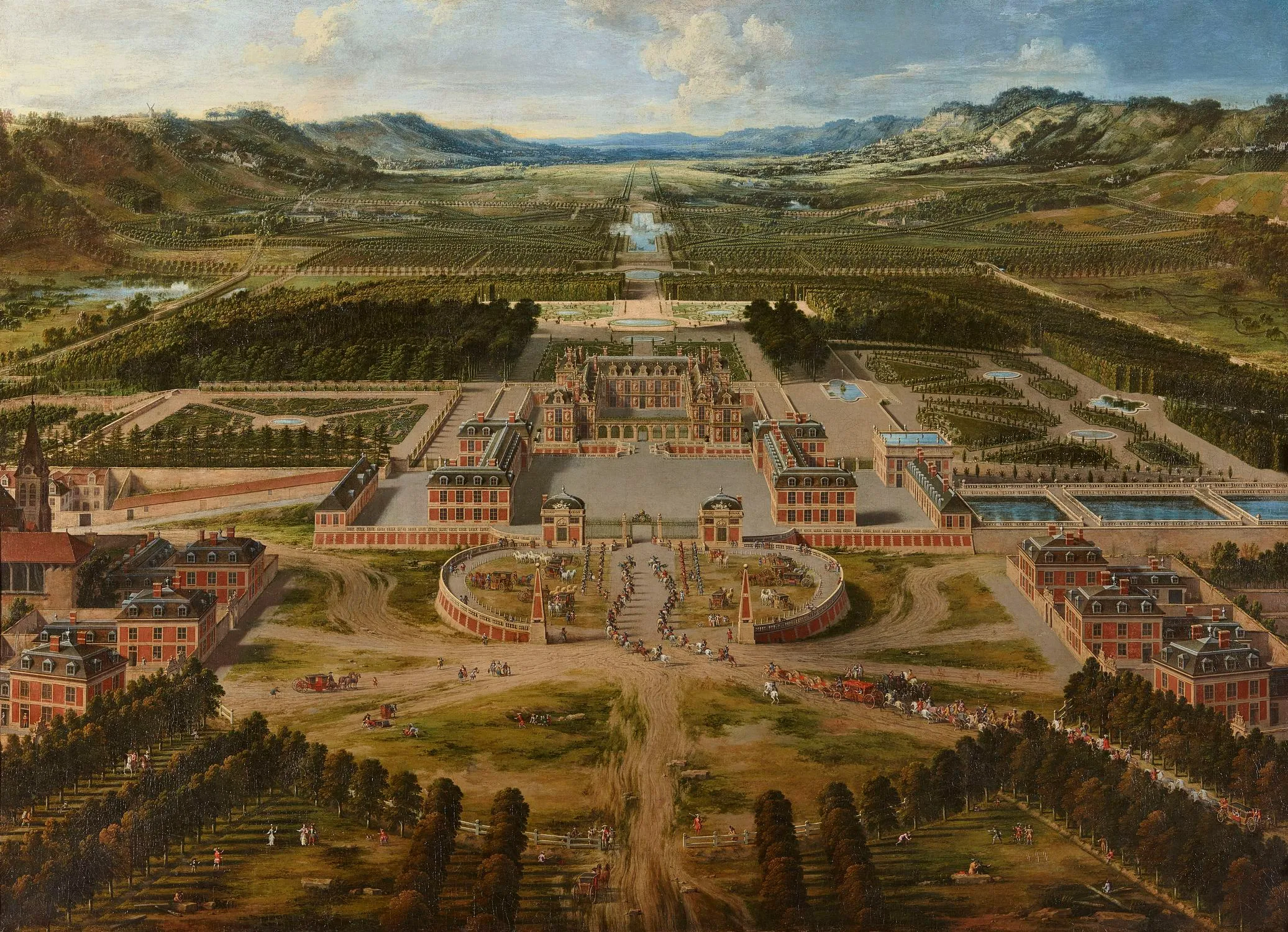
Versailles began as a modest hunting lodge used by Louis XIII on the marshy plains west of Paris, a practical base between forests rich in game. In the 1630s the king ordered a small château and walled gardens, drainage works and new roads to make the site habitable.
His son, Louis XIV, recognized the site’s strategic isolation from Paris and its theatrical potential. From the 1660s he enlarged and formalized the domain and, in 1682, installed the royal court and government here to embody absolute monarchy.
Louis XIV’s grand project
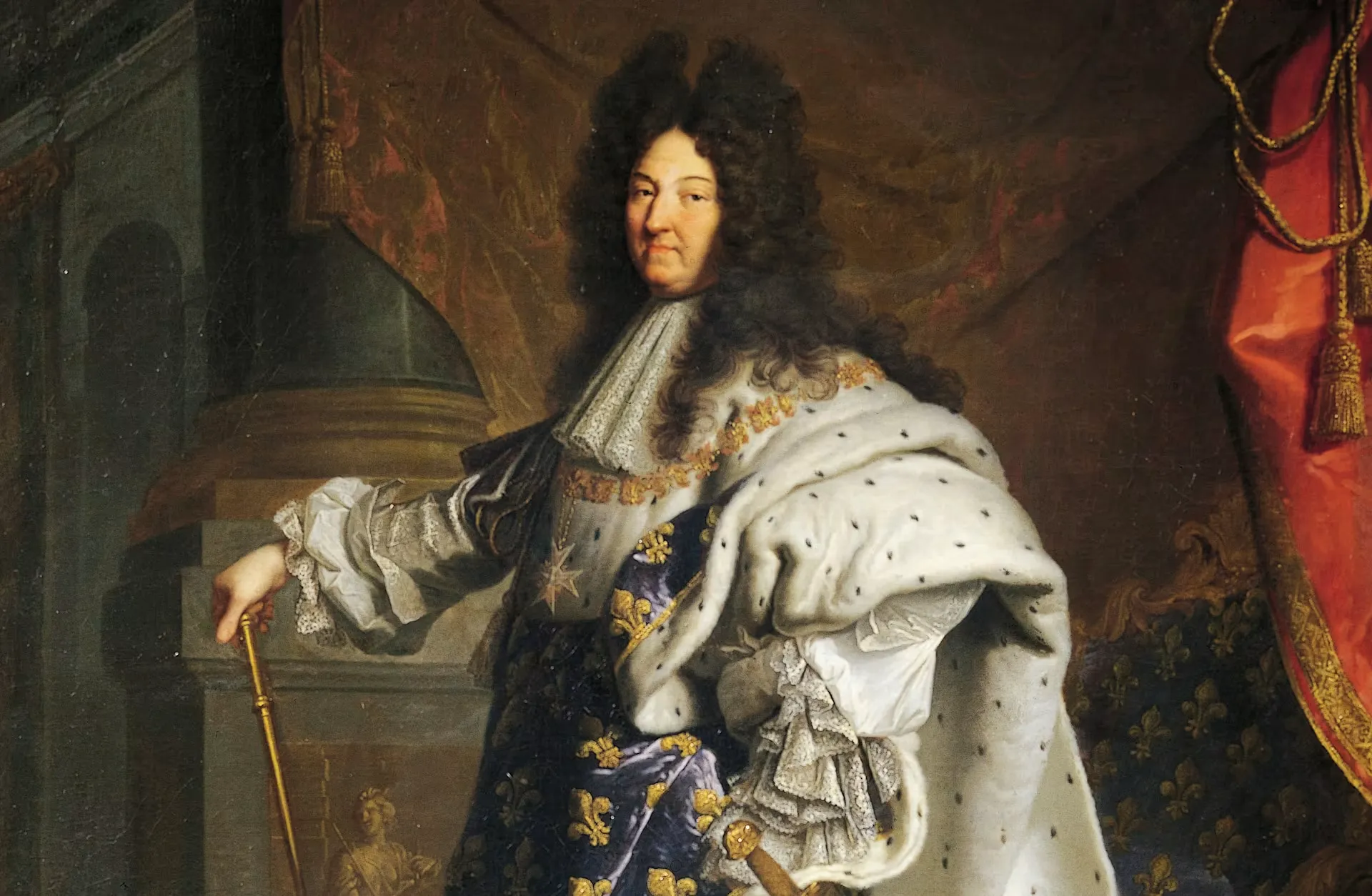
Architects Louis Le Vau and Jules Hardouin‑Mansart transformed the lodge into a palace in successive campaigns; Charles Le Brun orchestrated allegorical ceilings that celebrated the king’s victories. The ‘envelope’ around the old château, the State Apartments, the Royal Chapel and the Opera took shape between the 1660s and early 1700s.
Architecture, ceremony and urban planning served a political program: to centralize power and stage the image of the Sun King. Protocol regulated every gesture, and Versailles set the template for courts across Europe.
Hall of Mirrors and state apartments
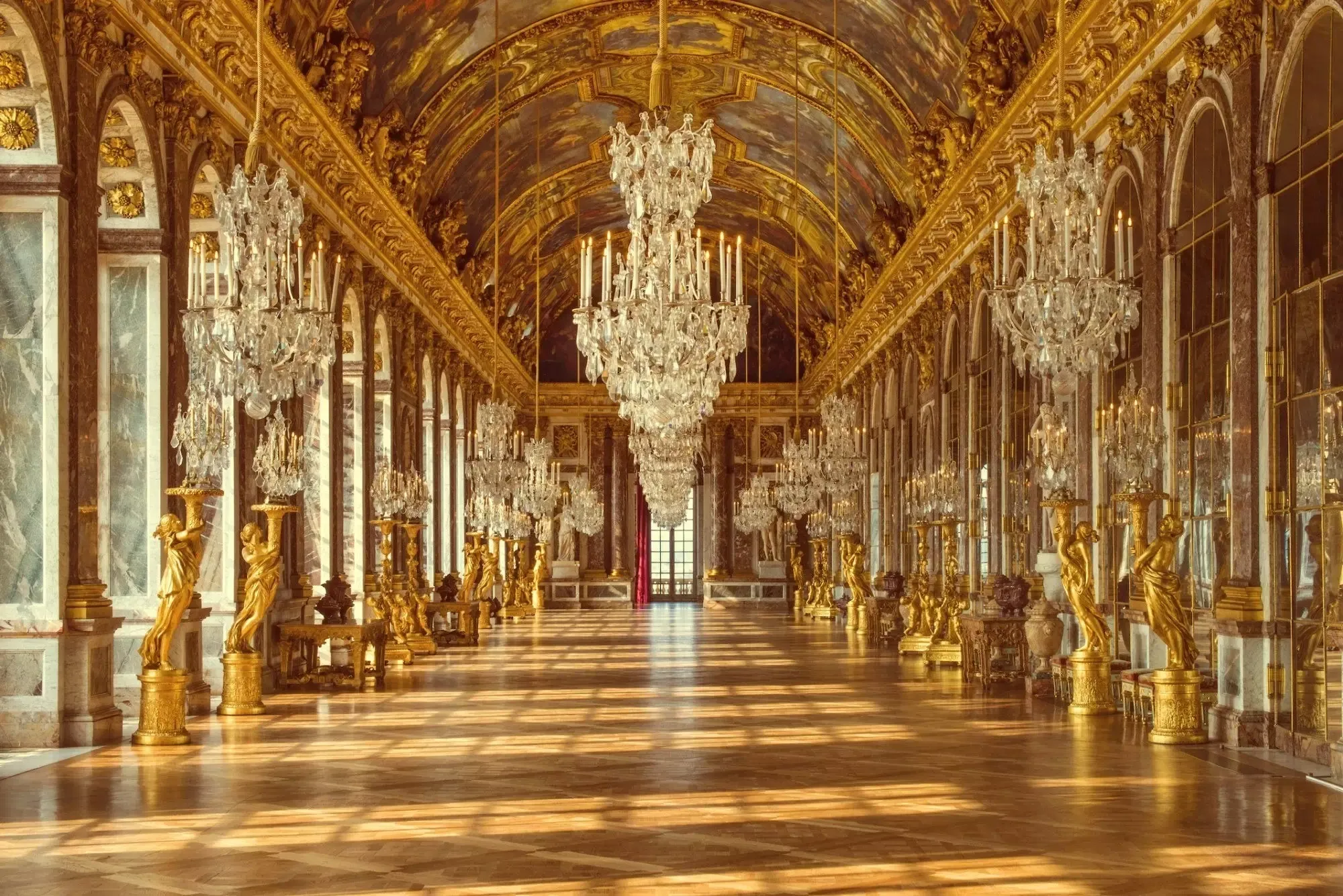
Seventeen mirrored arches face seventeen garden windows, multiplying views and light along a 73‑meter gallery hung with chandeliers and gilded bronzes. Here the king held processions, diplomatic audiences and fêtes that projected prestige.
The King’s and Queen’s State Apartments form a sequence of antechambers and salons aligned with the path of the sun and dedicated to Roman gods. Their plan channeled access and choreographed movement according to rank.
Gardens by Le Nôtre

André Le Nôtre laid out a vast geometric landscape of parterres, tapis verts and long perspectives that draw the eye to the Grand Canal. Terraces, staircases and balustrades knit architecture and nature into a single stage.
In hidden bosquets—outdoor rooms enclosed by hedges—water, sculpture and surprise create theatrical settings for ballets, masquerades and fireworks. Each grove, from the Ballroom to the Colonnade, had a distinct scenography.
Fountain shows and waterworks
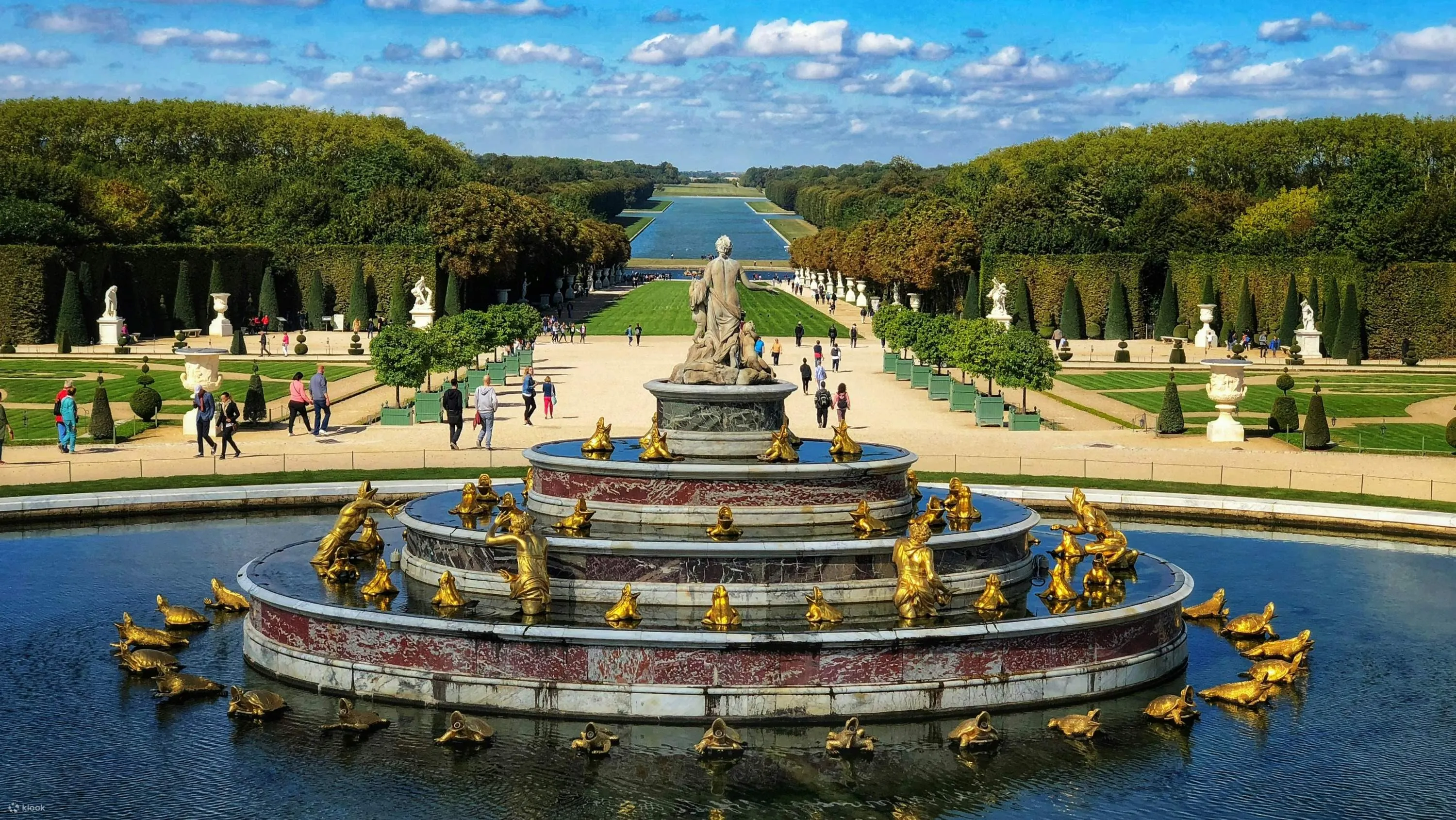
Supplying water to hundreds of jets required bold engineering, from reservoirs and aqueducts to the great Machine de Marly on the Seine. Fountains were activated as the king approached, turning walks into orchestrated spectacles.
Today the Musical Fountains and Musical Gardens re‑create this choreography on selected days, using restored hydraulics and period music to bring the baroque landscape to life.
Trianon Estate and royal retreats
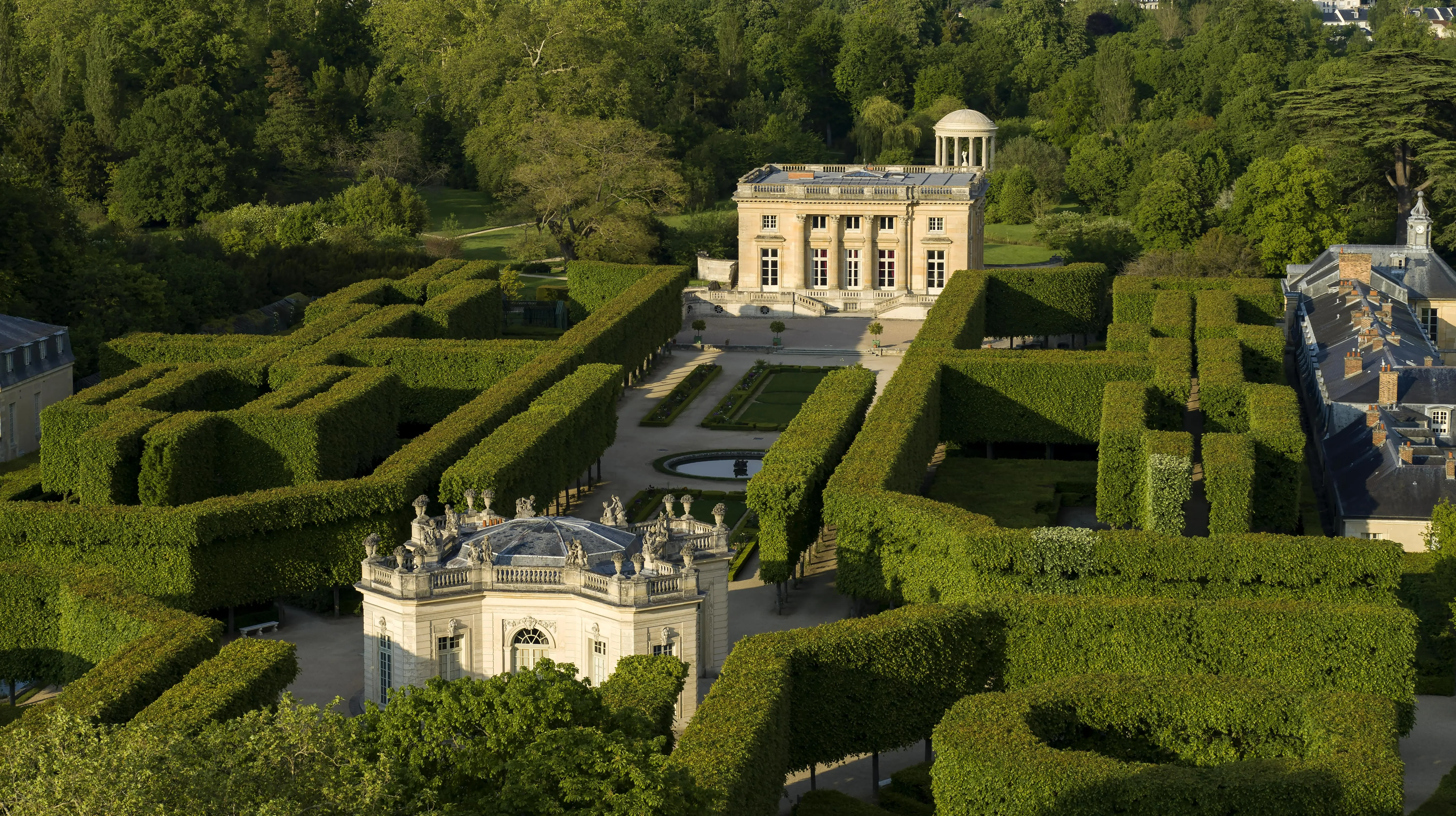
The pink‑marble Grand Trianon (1687) offered Louis XIV a refined retreat for private life and informal receptions away from court protocol. Its low pavilions and arcades open directly onto parterres scented with orange trees.
The Petit Trianon (1760s) and Marie‑Antoinette’s Hamlet reflect an 18th‑century taste for intimacy and nature. There the queen embraced simpler décor, gardens in the English style and a pastoral setting far from ceremony.
Life at court
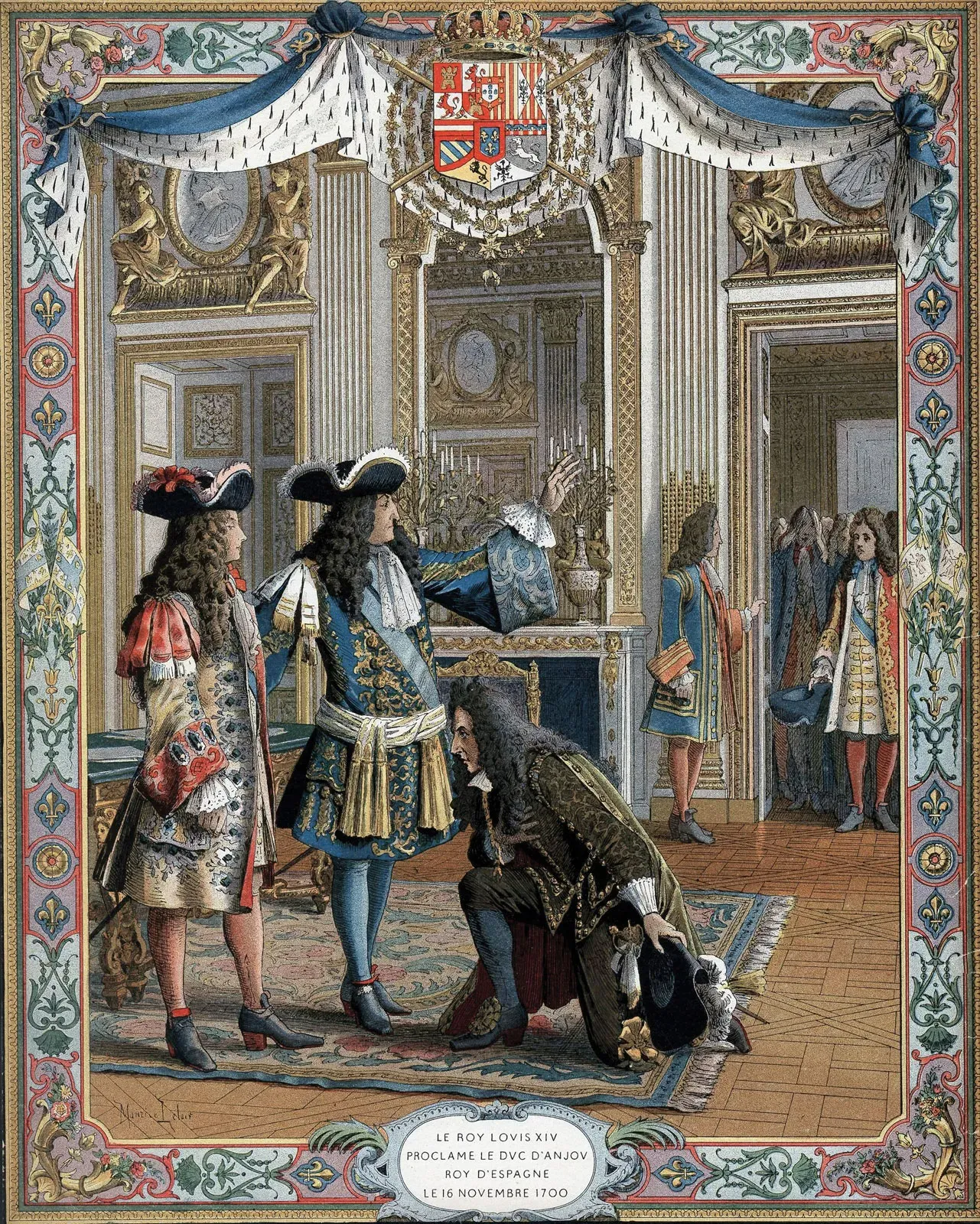
At its peak, several thousand courtiers, officers and servants lived at Versailles, competing for access in a world governed by strict etiquette. Proximity to the king meant pensions, offices and favors; distance meant obscurity.
Daily rituals — the lever and coucher, public mass and meals, formal walks through the salons — made power visible and predictable. Music, theatre and hunting punctuated the calendar and shaped court society.
Revolution, decline and revival

In 1789, the October Days forced the royal family to move to Paris, and Versailles lost its political role. Collections were inventoried and dispersed; parts of the palace were repurposed or left to deteriorate.
In the 19th century, King Louis‑Philippe created the Museum of the History of France (1837), installing vast historical galleries that saved the site and reframed it as a national monument.
Treaty of Versailles

On 28 June 1919, the Hall of Mirrors hosted the signing of the Treaty of Versailles, formally ending the First World War with Germany. The choice of venue linked new diplomacy to the old stage of European power.
The treaty gave the palace a modern global resonance — at once a place of ceremony, remembrance and debate about peace and reparations.
Visiting the estate today

Today carefully designed visitor routes and timed entry balance preservation with access, easing flows through the busiest rooms. Multimedia tools and clear signage help you understand what you see as you move.
Beyond the Palace, shuttles, bike and cart rentals and accessible paths make the Gardens and the Trianon Estate easier to explore at your own pace.
Conservation and sustainability
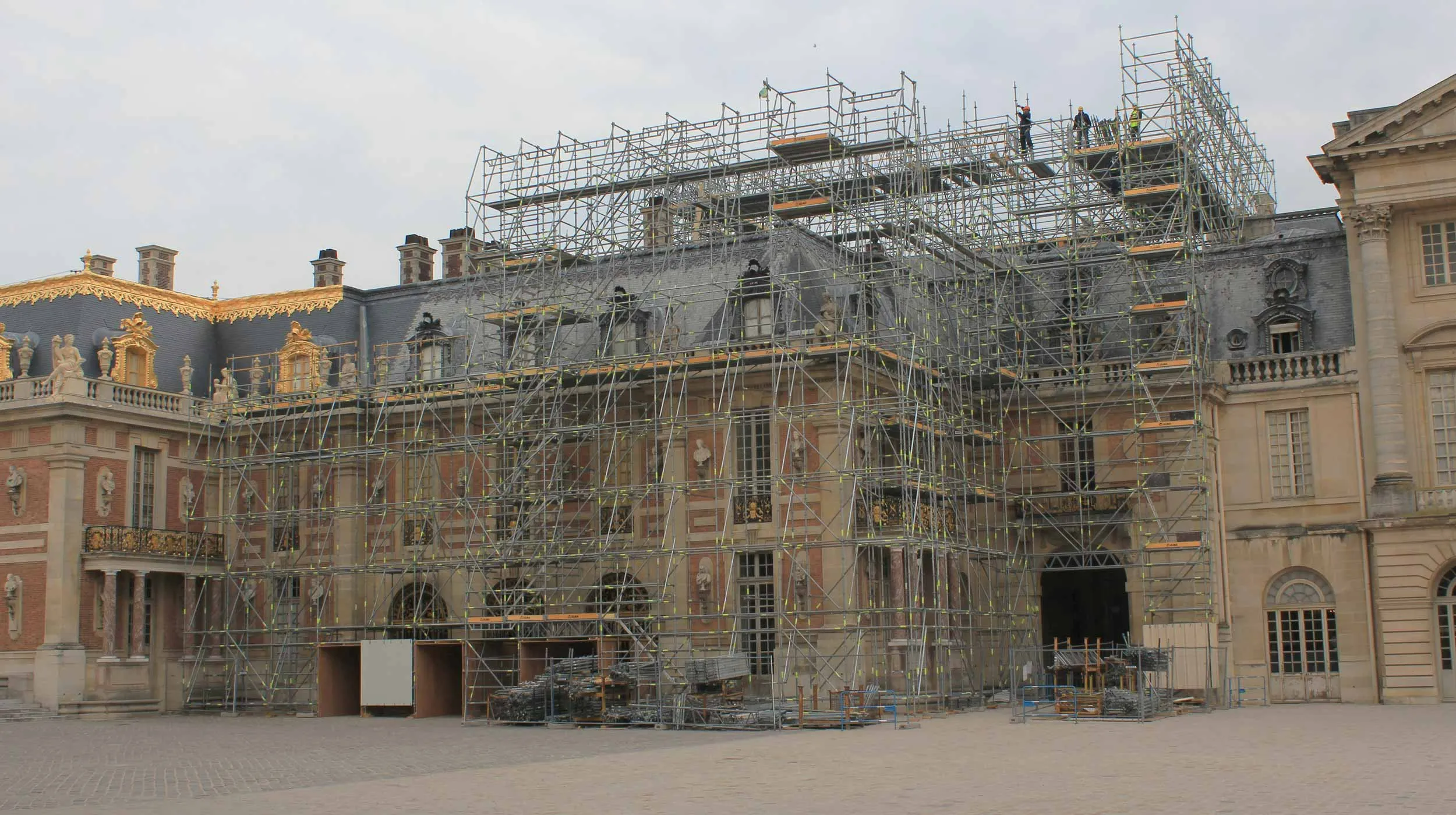
Major restoration campaigns safeguard fragile marbles, gilding and paintings, while scientific labs monitor climate and materials. The gardens undergo continual replanting after storms and disease to preserve historical designs.
Environmental measures include careful water management for fountains, sustainable forestry for the groves and energy‑efficient lighting across the estate.
Versailles town and nearby highlights

The town of Versailles invites you to linger — browse the Notre‑Dame market, antique dealers and cafés in shaded streets just beyond the gates. The Saint‑Louis and Notre‑Dame quarters retain 18th‑century charm.
For longer stays, consider nearby Saint‑Germain‑en‑Laye, the Arboretum de Chèvreloup, or woodland walks around the Grand Canal and in the surrounding royal forest.
A UNESCO icon

Inscribed on the UNESCO World Heritage List in 1979, Versailles embodies the ideals of French classicism, from architecture to garden design. Its scale and coherence influenced palaces and parks far beyond France.
Above all, it is a living museum: a place where research, restoration and public life continue to renew a site that remains grand, complex and endlessly fascinating.